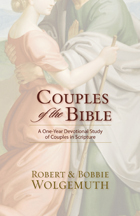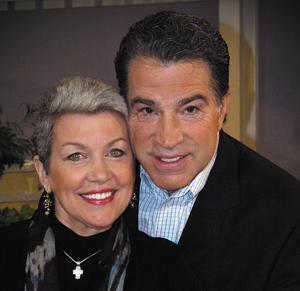| Living Out God’s Call in the 21st Century |
 |
 |
| Written by Leslie Santamaria | |
| Tuesday, 02 April 2013 03:07 PM America/New_York | |
|
The April 30 release is a book about “what it means to be a follower of Christ in the 21st century,” Stearns told Christian Retailing. The book’s title has a dual meaning, he said. It refers to the unfinished mission Jesus gave His disciples: to preach the gospel to the whole world. But it also refers to how many Christians “feel incomplete in our faith, that’s something’s missing.” More than evangelism, Stearns said the Great Commission is “really what Jesus always called the kingdom of God … going into the world and showing the world a different way to live, a different way to relate to one another, a different way to relate to God, caring for the poor and the vulnerable and the widow and the orphan, being people of integrity, people of compassion, people of justice.” However, Stearns writes, with the endless details of everyday life, many believers have lost sight of God’s larger narrative. To help them recover what that is, Unfinished begins by investigating a big question, “What is Truth?” and then summarizes God’s grand story. Stearns describes what he calls the clash between “the magic kingdom”—the affluent Christian life—and “the tragic kingdom”—the Christian life shaped by poverty. He says neither reflects the true kingdom of God, which requires individuals submitting to God’s rule, communities governed by His values and people going into the world as His ambassadors. Among the examples he cites are Steve Reynolds, who introduced U2 frontman Bono to Ethiopia’s famine, and the Stu and Robin Phillips family, who sold their Wyoming ranch to build God’s kingdom. Stearns’ previous book, The Hole in Our Gospel, also from Thomas Nelson, won the 2010 Christian Book Award from the Evangelical Christian Publishers Association. To order, call 800-251-4000. |

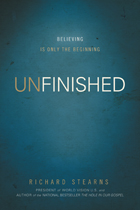 Richard Stearns, president of Christian relief organization World Vision, has spoken to countless people worldwide from all walks of life, and found that many express a common concern. In Unfinished: Believing is Only the Beginning (9780849948510, $24.99, Thomas Nelson/HarperCollins Christian Publishing), Stearns observes that believers want to be sure they are living out God’s calling for their lives.
Richard Stearns, president of Christian relief organization World Vision, has spoken to countless people worldwide from all walks of life, and found that many express a common concern. In Unfinished: Believing is Only the Beginning (9780849948510, $24.99, Thomas Nelson/HarperCollins Christian Publishing), Stearns observes that believers want to be sure they are living out God’s calling for their lives.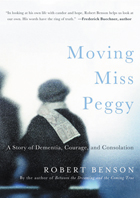 Robert Benson, author of 17 books, has written a tribute to his mother and her journey through the darkness of dementia in Moving Miss Peggy: A Story of Dementia, Courage, and Consolation. For practical assistance, the book includes his family’s establishment of a care plan, as well as resources related to the family dynamics and healthcare issues that accompany dementia. Abingdon Press releases Moving Miss Peggy in hardcover this month for $15.99.
Robert Benson, author of 17 books, has written a tribute to his mother and her journey through the darkness of dementia in Moving Miss Peggy: A Story of Dementia, Courage, and Consolation. For practical assistance, the book includes his family’s establishment of a care plan, as well as resources related to the family dynamics and healthcare issues that accompany dementia. Abingdon Press releases Moving Miss Peggy in hardcover this month for $15.99. Through the viewpoint of Lazarus and in narrative form, Frank Viola recounts Jesus’ many visits to Bethany in God’s Favorite Place on Earth (David C Cook), which releases May 1 in softcover for $14.99. Based on Scripture and historical research, the book brings the biblical scenes set in Bethany to life with additional dialogue and action, revealing Jesus’ views on several issues and highlighting struggles common to all Christians.
Through the viewpoint of Lazarus and in narrative form, Frank Viola recounts Jesus’ many visits to Bethany in God’s Favorite Place on Earth (David C Cook), which releases May 1 in softcover for $14.99. Based on Scripture and historical research, the book brings the biblical scenes set in Bethany to life with additional dialogue and action, revealing Jesus’ views on several issues and highlighting struggles common to all Christians. 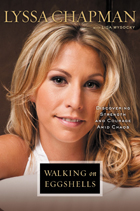 Walking on Eggshells: Discovering Strength and Courage Amid Chaos is the memoir of Lyssa Chapman of A&E’s hit reality show Dog the Bounty Hunter. With award-winning author Lisa Wysocky, Chapman recounts how she emerged from a nightmare of molestation, violence and teen pregnancy to a rewarding, positive life. Chapman seeks to inspire others to break the cycle of abuse and rise from extreme adversity. Howard Books releases Chapman’s book on May 7 in hardcover for $24.99.
Walking on Eggshells: Discovering Strength and Courage Amid Chaos is the memoir of Lyssa Chapman of A&E’s hit reality show Dog the Bounty Hunter. With award-winning author Lisa Wysocky, Chapman recounts how she emerged from a nightmare of molestation, violence and teen pregnancy to a rewarding, positive life. Chapman seeks to inspire others to break the cycle of abuse and rise from extreme adversity. Howard Books releases Chapman’s book on May 7 in hardcover for $24.99.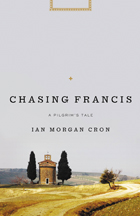 Ian Morgan Cron, best-selling author and Episcopal priest, examines the life of Saint Francis of Assisi in Chasing Francis: A Pilgrim’s Tale ($14.99, softcover). Cron makes the case that the life and legacy of Francis—a life of radically generous living—is an ideal model for today’s evangelical churches to follow. The author uses the format of wisdom literature—blending fiction, nonfiction and historical teaching—with a semi-autobiographical narrative. Zondervan releases Chasing Francis on May 7.
Ian Morgan Cron, best-selling author and Episcopal priest, examines the life of Saint Francis of Assisi in Chasing Francis: A Pilgrim’s Tale ($14.99, softcover). Cron makes the case that the life and legacy of Francis—a life of radically generous living—is an ideal model for today’s evangelical churches to follow. The author uses the format of wisdom literature—blending fiction, nonfiction and historical teaching—with a semi-autobiographical narrative. Zondervan releases Chasing Francis on May 7. 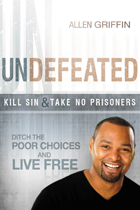 In Undefeated: Ditch the Poor Choices and Live Free, Allen Griffin, associate pastor and founder of AG Ministries, says the main obstacle between believers and their divine purpose is undefeated sin. He aims to help readers increase in power and effectiveness in their walk with God by ending repetitive sins and vicious cycles without fear and guilt. Retailing for $14.99, Undefeated releases in softcover May 7 from Passio, an imprint of Charisma House.
In Undefeated: Ditch the Poor Choices and Live Free, Allen Griffin, associate pastor and founder of AG Ministries, says the main obstacle between believers and their divine purpose is undefeated sin. He aims to help readers increase in power and effectiveness in their walk with God by ending repetitive sins and vicious cycles without fear and guilt. Retailing for $14.99, Undefeated releases in softcover May 7 from Passio, an imprint of Charisma House.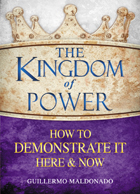 Author and TV host Guillermo Maldonado discusses how believers can discover God’s kingdom, enter it and expand its dominion in The Kingdom of Power: How to Demonstrate It Here & Now. Maldonado is founding pastor of King Jesus Ministry in Miami and serves as apostle to churches worldwide through the New Wine Apostolic Network. Whitaker House will release the book simultaneously in English and Spanish in two formats, softcover ($14.99) and hardcover ($22.99), May 1.
Author and TV host Guillermo Maldonado discusses how believers can discover God’s kingdom, enter it and expand its dominion in The Kingdom of Power: How to Demonstrate It Here & Now. Maldonado is founding pastor of King Jesus Ministry in Miami and serves as apostle to churches worldwide through the New Wine Apostolic Network. Whitaker House will release the book simultaneously in English and Spanish in two formats, softcover ($14.99) and hardcover ($22.99), May 1.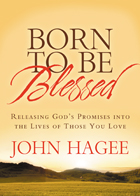 In Born to be Blessed: Releasing God’s Promises Into the Lives of Those You Love, John Hagee, pastor and New York Times best-selling author, discusses how to unleash the power of God’s prophetic blessing in families. Hagee combines scripture and teaching from his best-seller The Power of the Prophetic Blessing and includes more than 75 prophetic blessings for a variety of circumstances. Worthy Publishing releases Born to Be Blessed ($14.99) on May 7.
In Born to be Blessed: Releasing God’s Promises Into the Lives of Those You Love, John Hagee, pastor and New York Times best-selling author, discusses how to unleash the power of God’s prophetic blessing in families. Hagee combines scripture and teaching from his best-seller The Power of the Prophetic Blessing and includes more than 75 prophetic blessings for a variety of circumstances. Worthy Publishing releases Born to Be Blessed ($14.99) on May 7.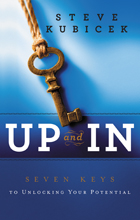 Fortune 500 CEO Steve Kubicek shows readers how to adopt an uplifting mind-set in Up and In: Seven Keys to Unlocking Your Potential (Summit Partners). Distributed by Advocate Distribution Solutions, a division of Send The Light, this collection of 42 daily readings presents a self-guided, inspirational tour toward achieving their potential, addressing such issues as uncovering true worth, confronting damaging thinking and habits and developing the tools to rebound from setbacks. Releasing May 14, the book is available in hardcover ($22.95) and softcover ($19.95), as well as e-book.
Fortune 500 CEO Steve Kubicek shows readers how to adopt an uplifting mind-set in Up and In: Seven Keys to Unlocking Your Potential (Summit Partners). Distributed by Advocate Distribution Solutions, a division of Send The Light, this collection of 42 daily readings presents a self-guided, inspirational tour toward achieving their potential, addressing such issues as uncovering true worth, confronting damaging thinking and habits and developing the tools to rebound from setbacks. Releasing May 14, the book is available in hardcover ($22.95) and softcover ($19.95), as well as e-book. Latest project: Killing Jesus: The Unknown Conspiracy Behind the World’s Most Notorious Execution (9781617951879, Worthy Publishing).
Latest project: Killing Jesus: The Unknown Conspiracy Behind the World’s Most Notorious Execution (9781617951879, Worthy Publishing).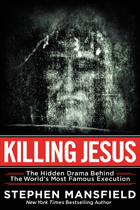 You did not write this book in your office, as you typically do. Where did you write? I found it too gritty and disturbing to put on the page in my very comfortable office. I know this sounds odd, perhaps even contrived, but I did genuinely write in public places. It seemed fitting. I wrote in Washington, D.C.’s Union Station and sitting with Israeli troops at the Citadel of David, for example. I just had to be among crowds and human drama to get this on the page.
You did not write this book in your office, as you typically do. Where did you write? I found it too gritty and disturbing to put on the page in my very comfortable office. I know this sounds odd, perhaps even contrived, but I did genuinely write in public places. It seemed fitting. I wrote in Washington, D.C.’s Union Station and sitting with Israeli troops at the Citadel of David, for example. I just had to be among crowds and human drama to get this on the page. 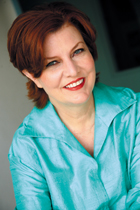 ASK THE AUTHOR:
ASK THE AUTHOR: 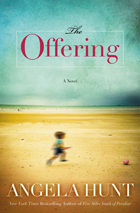 What research did you conduct for this novel?
What research did you conduct for this novel? 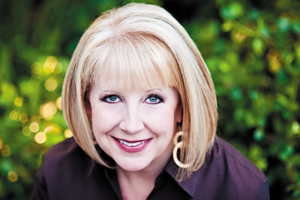 ASK THE AUTHOR:
ASK THE AUTHOR: 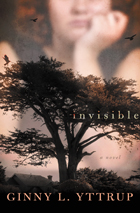 What are the premise and theme of Invisible? Invisible is the story of three women, each hiding from themselves and others. Ellyn, a chef, has spent her life hiding behind a layer of extra weight; Sabina, a counselor, is hiding behind a wall of grief; and Twila is wasting away as she struggles with anorexia—she wants to disappear, literally. As the women are drawn together and their lives intertwine, they begin to see themselves in one another and come to recognize themselves as the beautiful creations they are. The overarching theme of Invisible is freedom, which the characters enjoy once they accept themselves as ones created in the image of God. Embracing that truth frees the characters, and us, to focus on the glory of God living within us, rather than on our human flaws.
What are the premise and theme of Invisible? Invisible is the story of three women, each hiding from themselves and others. Ellyn, a chef, has spent her life hiding behind a layer of extra weight; Sabina, a counselor, is hiding behind a wall of grief; and Twila is wasting away as she struggles with anorexia—she wants to disappear, literally. As the women are drawn together and their lives intertwine, they begin to see themselves in one another and come to recognize themselves as the beautiful creations they are. The overarching theme of Invisible is freedom, which the characters enjoy once they accept themselves as ones created in the image of God. Embracing that truth frees the characters, and us, to focus on the glory of God living within us, rather than on our human flaws.